Getting to the bottom of things
It’s all about da butt
With so many of us having to spend the majority of our days glued to a chair, we are in danger of contracting the “sitting disease”.
And yes, it really is a disease because too much sitting can actually lead to organ damage, muscle degradation, and damaged backs. By strengthening your glute muscles, your spine will have more support and your pelvis will automatically begin to stabilize. Both of which are essential to improved posture.
Your glutes are the largest and by far the most important group of muscles in your body. Not because strong glutes look great (which they do), it’s because they consist of three muscles that work together to abduct, rotate and extend the hip making them vital to everyday movements. By strengthening these muscles (the gluteus minimus, medius and maximus) your posture, athletic performance and overall strength will improve drastically. Here are some advantages of having strong glutes.
The Benefits of Having Strong Glutes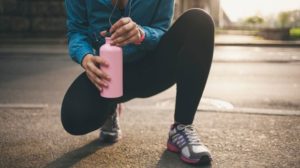
Injury Prevention
If your glutes are weak, your lower body alignment can be out of balance. This causes problems like as Achilles tendinitis, shin splints, runner’s knee and iliotibial band (ITB) syndrome. When the glutes are not strong enough to do their job of extending the hip and pushing the body forward, other muscles not as well designed for the job take over. The hamstrings, low back, quadriceps (thighs) and calves may become disproportionately strong — increasing your risk of injury.
Great exercises include the deadlift and squats and Pilates
Power
The gluteus maximus, the largest muscle in the body, can produce an enormous amount of power.
Whilst you may not be training for athletic events, strong glutes will make walking, running, jumping and cycling easier, more efficient and less taxing on your body overall.
Back Health
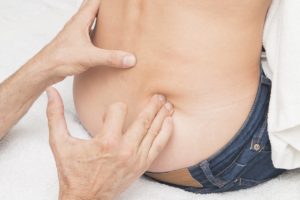 Strong glutes support the back. When your glutes aren’t working properly, your psoas muscle, (a hip flexor that runs from the spine to the legs), takes over.
Strong glutes support the back. When your glutes aren’t working properly, your psoas muscle, (a hip flexor that runs from the spine to the legs), takes over.Not all back pain is a result of weak glutes, but it can be a contributing factor in many cases.
Athletic Performance
Whilst most of us aren’t professional athletes, it’s worth knowing that strong glutes are responsible for accelerating, decelerating, changing directions and creating explosive power in jumps. All of these actions are needed in nearly every sport.
Strengthening Your Glutes
Whilst my mother always said her problems were behind her – she sat on them, most of us ladies like to have a toned derrier.
So, bearing your end goal in mind (toned, lifted butt), training your glutes at least once a week needs to be on the menu.
My fav’s for targeting the area include:
- full squats,
- deadlifts,
- lunges
- step ups
We call these functional exercises as they mimic real-life movements that you’re likely to do in day to day life. In other words, you’ll function better in your daily life too.
Let’s not forget the aerobic exercise which needs to be included in your weekly routine.
Aim for at least 30 minutes of moderate-intensity exercise five days a week.
Hill walking or elevating the incline on your treadmill or elliptical machine will help strengthen the glutes while burning fat.
Intermediate or advanced trainees can replace one to three moderate-intensity aerobic sessions with high-intensity sprinting sessions to help build and strengthen the glutes.
Glute Workout
Always start with a 5-10 minute warm up. Include moves similar to the ones you’re about to do in your work out:
- small squats
- walking lunges
- high knees
- stretches
I’m going to focus on some exercises you can do at home or in the park:
Repeat this circuit 3 – 5 times:
10 squats
10 lunges on each leg
10 step ups on each leg
10 deadlifts
Rest 1 minute then repeat
Squats
Standing with your feet a little over hip distance apart, drop your weight back and down as if you were going to sit down.
Press back up to standing
Key things to remember:
- your weight should be in your heals all the time
- press your knees slightly to the side so they track over your middle toe
- keep your chest up
- squeeeeeeeze your bottom as you stand up again
Lunges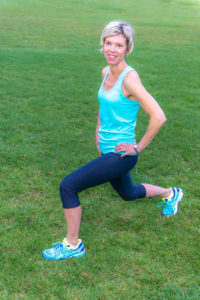
Take a big step forward and then bend both knees, allowing the back knee to come towards the ground.
Keeping your chest up right, press off the front foot to come back to standing.
Key things to remember:
- your front knee should stay above your ankle – do not allow it to travel forward past your toes, you risk knee injury
- keep your body upright
- Squeeeeeze the glutes of the front leg to come back to standing
Step ups
Pick a solid step up to about knee high off the ground
Step up with alternating legs
Key things to remember:
- Step up with the whole foot on the step
- Squeeeeeeze your glutes to come up to standing
Deadlifts
If you have a weight you can hold in each hand, great, but you can do these without.
Stand with feet hip distance apart
Roll your shoulders back and down
Maintaining that shoulder position, tip forward from your hips until your body is parallel to the ground.
Squeeeeze your glutes and come back to standing
Key things to remember:
- Maintain your straight back throughout – you should feel a stretch in the back of your legs as you lower
You’ll notice the recurring theme of squeezing your glutes in these exercises. The reason I repeat this is that most people let their quadriceps (thighs) do the work in these exercises.
There are many variations of the above exercises and as you get stronger you can do things such as adding weights, jumps and lateral moves.
Always check with a trainer before you do this to avoid injury.
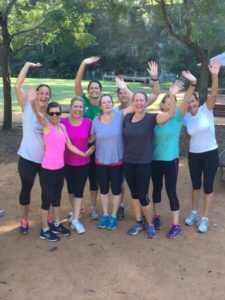
Fit! Fun! Fabulous!
Even better, join us for fun, functional outdoor fitness classes, Pilates and BarreAttack (find out why ballerinas look the way they do!)
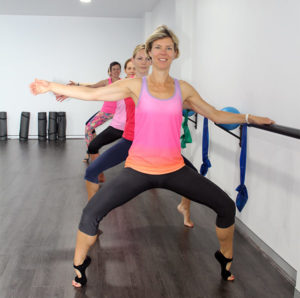
BarreAttack – Legs! Butts!
Click here to contact me and get your FREE trial class
